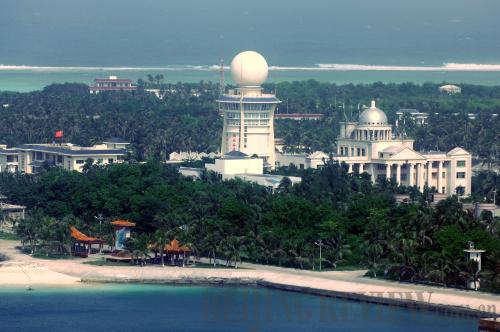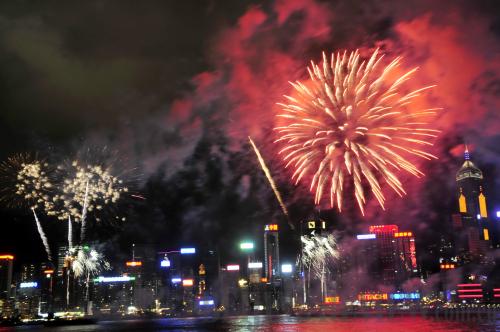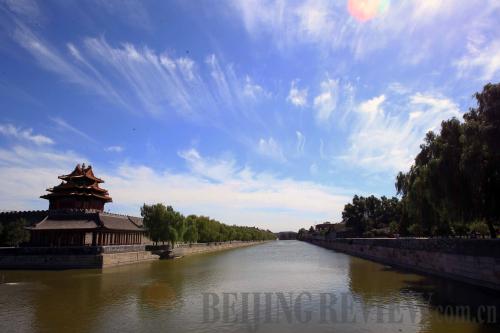|
 |
|
A bird's-eye view of Yongxing Island in the South China Sea, the seat of the Sansha City Government (CFP) |
China set up the city of Sansha to administer the Xisha, Zhongsha and Nansha islands and their surrounding waters in the South China Sea on July 24.
The city government is located on the 2.13-square-km Yongxing Island, the largest island in the Xisha Islands group.
As the smallest prefecture-level city in China in land area and population, Sansha includes 2.6 million square km of territorial waters.
On September 10, the Chinese Government issued a statement on the baselines of the territorial waters of Diaoyu Island and its affiliated islets in the East China Sea.
China's Permanent Representative to the UN Li Baodong met with UN Secretary General Ban Ki-moon on September 13, and filed a copy of the Chinese Government's Diaoyu Islands baseline announcement with the UN, which includes charts showing straight baselines and archipelagic baselines as well as lists of geographical coordinates.
 |
|
Fireworks light up the sky over Hong Kong's Victoria Harbor during a celebration of the 15th anniversary of Hong Kong's return to China on July 1 (CFP) |
The swearing-in ceremony of the fourth-term government of the Hong Kong Special Administrative Region was held at the Hong Kong Convention and Exhibition Center on July 1, which marked the 15th anniversary of Hong Kong's return to China.
Delivering a speech at the event, Chinese President Hu Jintao said that the Central Government will remain committed to the principles of "one country, two systems," "Hong Kong people administering Hong Kong" and a high degree of autonomy.
 |
|
Chinese writer Mo Yan (center) receives the 2012 Nobel Prize in Literature in Stockholm, Sweden, on December 10 (WU WEI) |
The Swedish Academy awarded the Nobel Prize in Literature to Mo Yan on December 10 in Stockholm, Sweden, making Mo the first Chinese novelist to win the literary honor.
The 57-year-old writer, "who with hallucinatory realism merges folk tales, history and the contemporary," is from a farmer's family and dropped out of school at the age of 12.
 |
|
Beijing's sky clears up after an autumn rain (ZHANG YANHUI) |
New Air Standards
The State Council passed revised air quality standards that include an index for fine particulate matter 2.5 micrometers or less in diameter (PM2.5), on February 29.
The new standards include indices for concentrations of PM2.5 and ozone over a period of eight hours. For years, China's environmental indices monitored particulate matter less than 10 micrometers.
In 2012, the government began monitoring PM2.5 in four municipalities, 27 provincial capitals, as well as three key regions—east China's Yangtze River Delta, south China's Pearl River Delta, and the Beijing-Tianjin-Hebei area in the north. In 2013, PM2.5 monitoring will be extended to 113 cities on the state environmental protection list, and to all cities at the prefecture level or above in 2015. | 